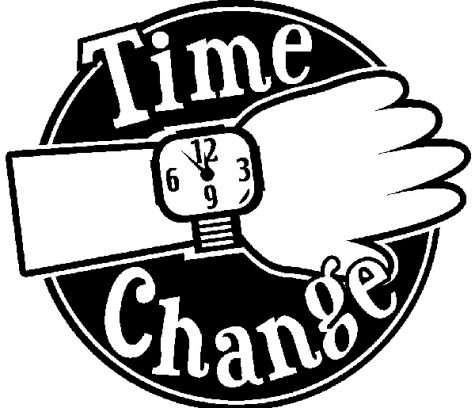Time Change

November 20, 2019
 Spring forward. Fall back. That’s how people usually remember to set their clocks an hour forward or back for Daylight Savings Time. During the spring, the time changes and moves ahead one hour (spring forward). In the fall, clocks are set back an hour, hence the term fall back.
Spring forward. Fall back. That’s how people usually remember to set their clocks an hour forward or back for Daylight Savings Time. During the spring, the time changes and moves ahead one hour (spring forward). In the fall, clocks are set back an hour, hence the term fall back.
For Spring Forward, Daylight Savings Time starts sometime in March on the second Sunday at 2:00 a.m. This year it started on March 10. Daylight Savings Time is a way to get more sunlight throughout the day. There is a myth that Daylight Savings Time was used by farmers to get extra sun time to work out in their fields. Daylight Savings Time isn’t actually in some other parts of the world. Different countries call Daylight Saving Time “summertime,” since it starts near this time. Less than 40% of countries use Daylight Saving Time.
The first country to use Daylight Savings Time was Germany. Germany started using Daylight Savings Time in 1916 after World War I to conserve energy.
Of course, the United States still uses Daylight Savings Time. Some places don’t even use Daylight Savings Time because of their location (tropical-like places Puerto Rico and the Virgin Islands). Usually, in these places, the daylight hours don’t change much from each season, so there isn’t much reason to use Daylight Savings Time.
You might think that all of the U.S. uses Daylight Savings Time, but not all of the country does. Examples of some places are Hawaii and Arizona. Hawaii is one of those tropical places so there isn’t much use for it there and Arizona doesn’t use it because of its hot climate. However Navajo Nation in Arizona does use it at the same time as the rest of the U.S.
Overall, Daylight Savings Time is good. Some people say that there is a con to it and that we don’t save energy other than help. Daylight Savings Time gives us more sunlight and more natural light to use instead of electricity for those that do use the natural light.


